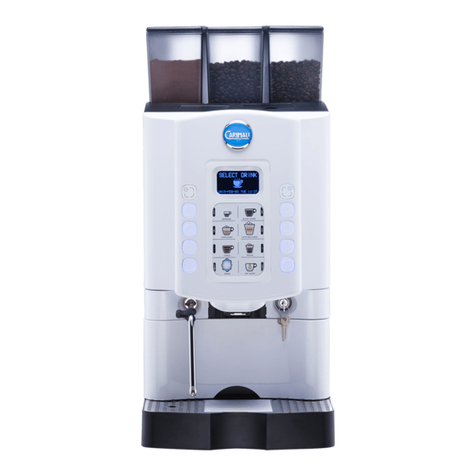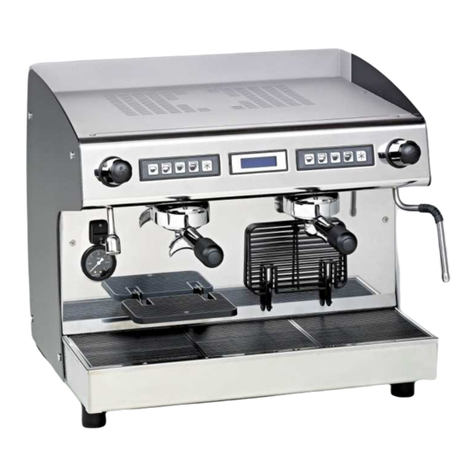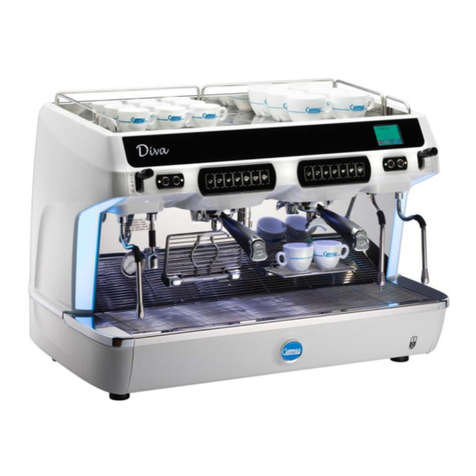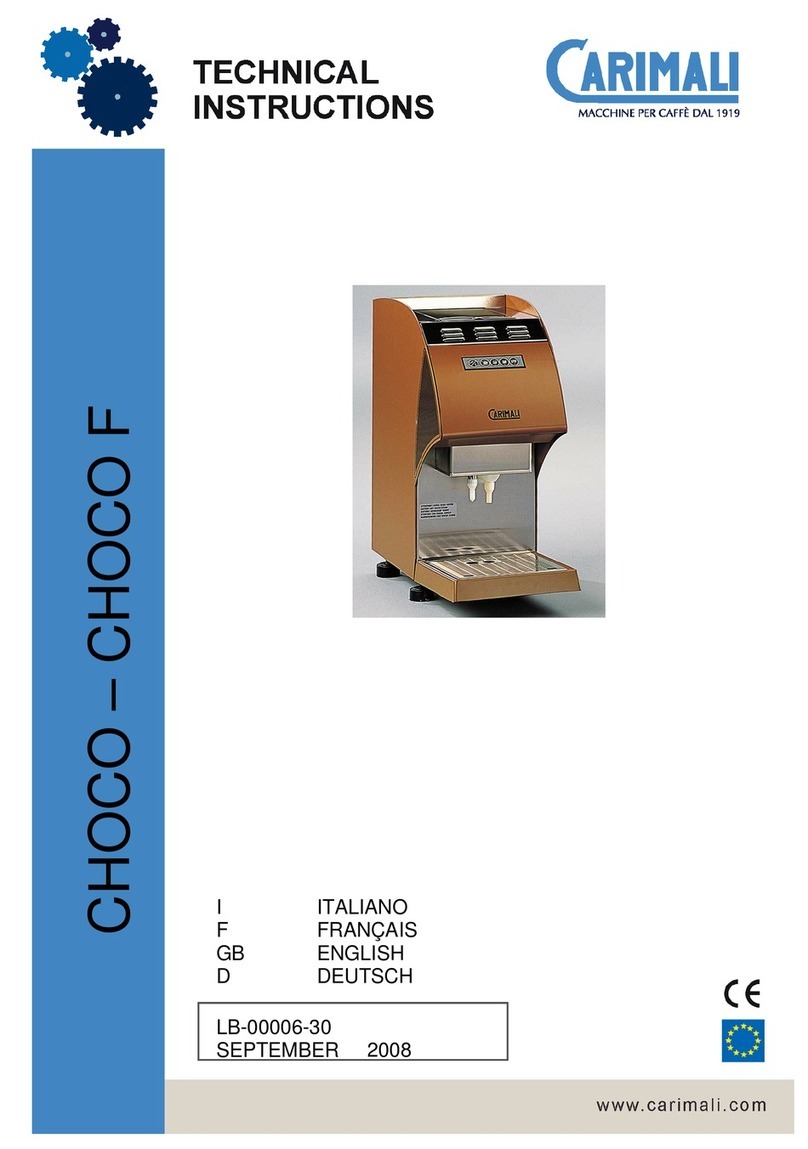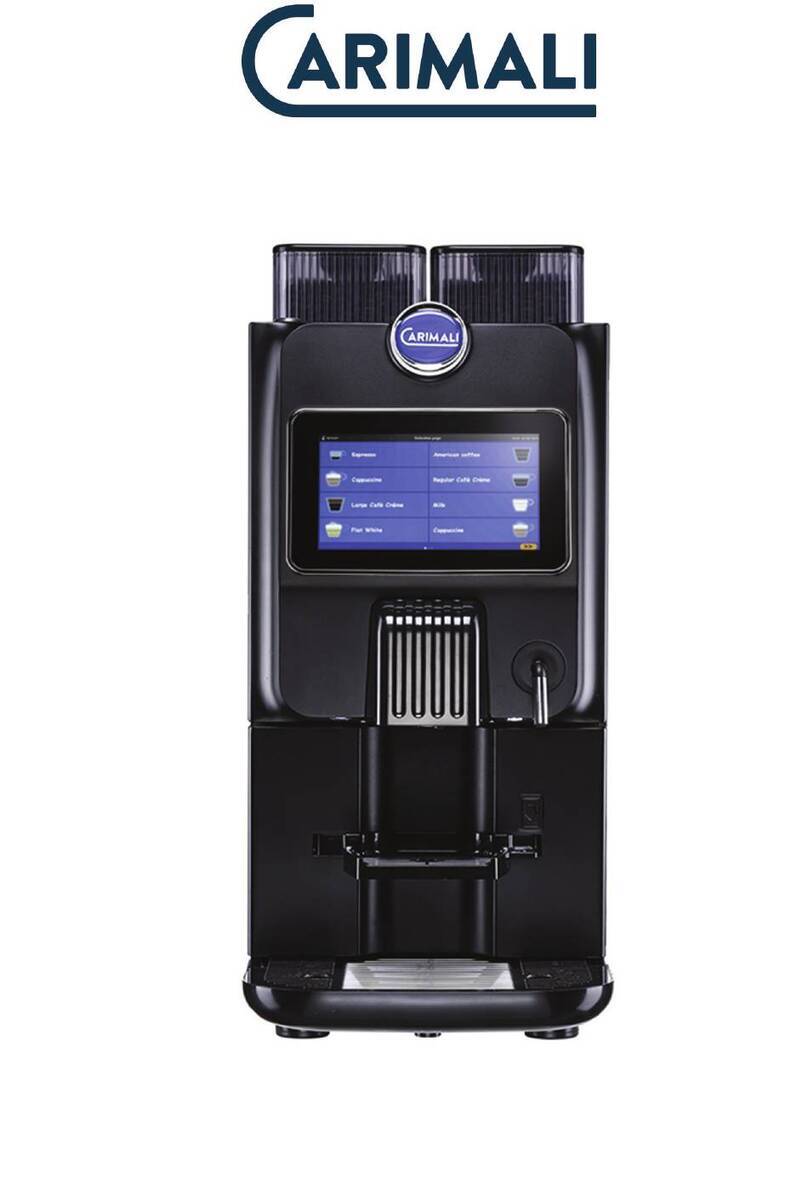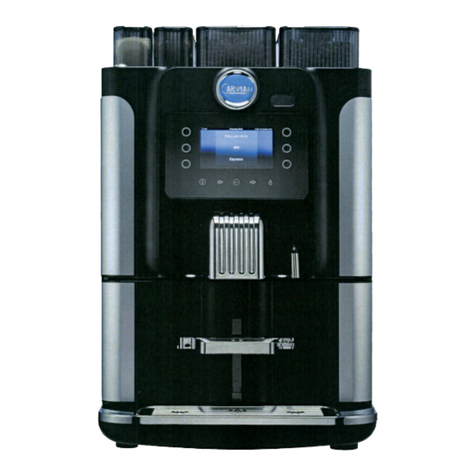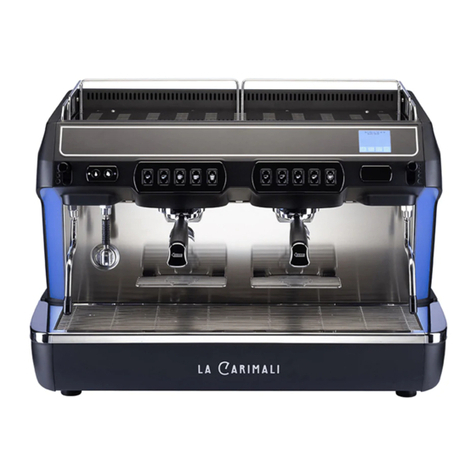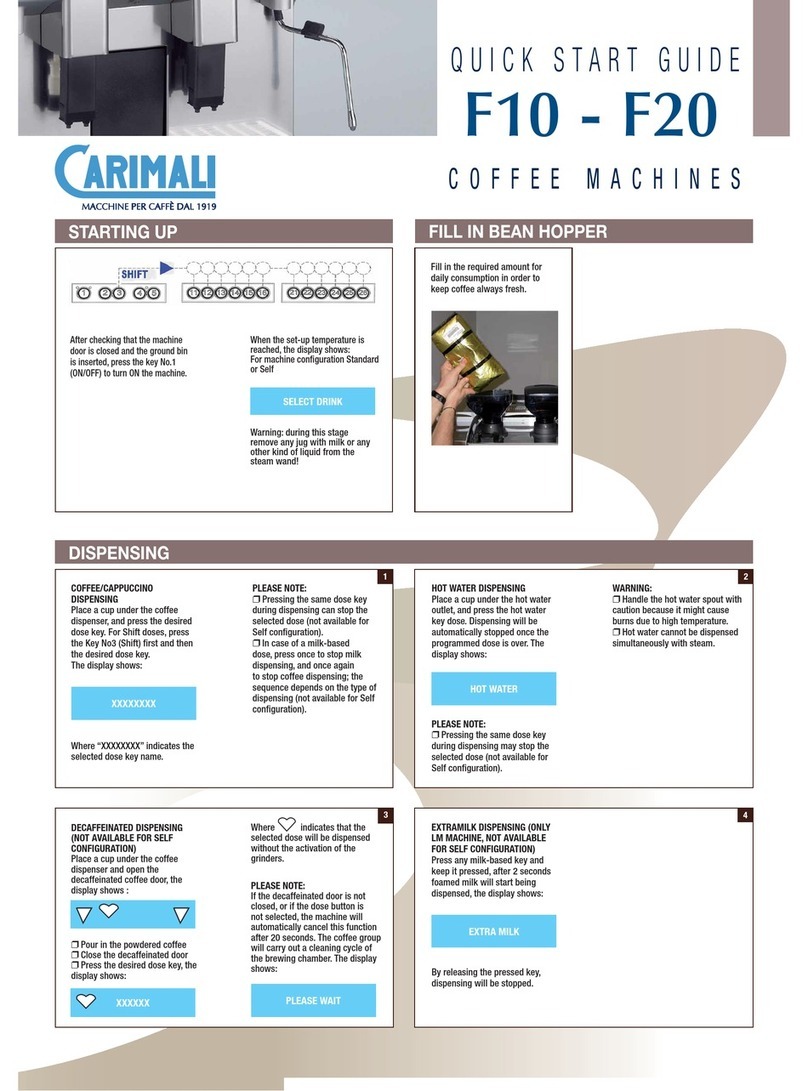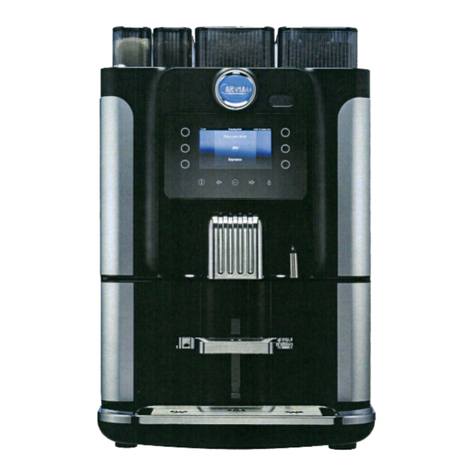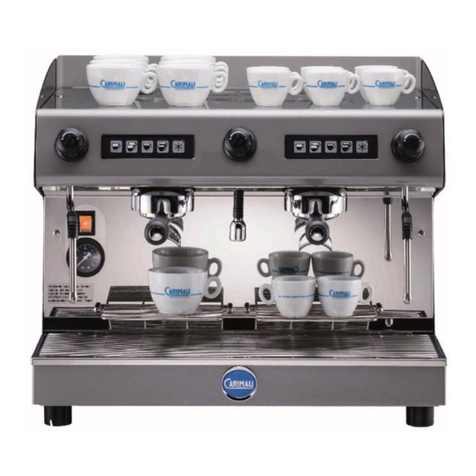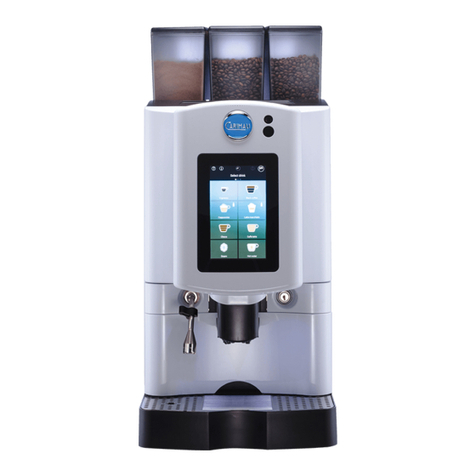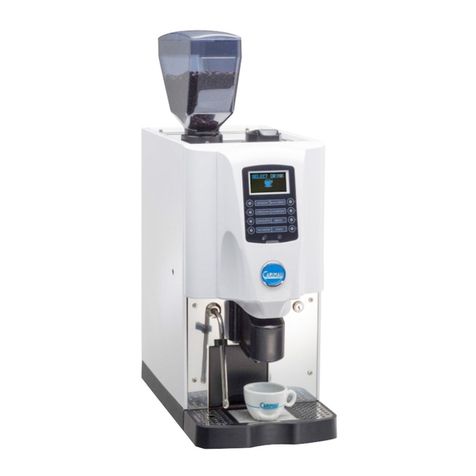
1Table of contents
1 INTRODUCTION ..........................................1.1
1.1 SYMBOL DESCRIPTION.............................1.1
1.2 SAFETY SPECIFICATIONS.........................1.2
1.2.1 Module HACCP
(Hazard Analysis Critical Control Point)...1.5
1.2.2 Personal protective equipment (PPE) .....1.6
1.3 RESIDUAL RISKS........................................1.6
1.4 NECESSARY TOOL SET.............................1.7
1.5 CONSUMABLES / ACCESSORIES .............1.8
,QVWDOODWLRQRI¿OWHU&$5,SXUH..........
2 DESCRIPTION OF THE MACHINE .............2.1
2.1 TOUCH SCREEN DISPLAY.........................2.2
2.1.1 Information bar ........................................2.2
2.2 MACHINE CONFIGURATIONS....................2.3
2.3 OPTION........................................................2.8
2.4 ADDITIONAL UNITS ..................................2.12
2.5 MACHINE IDENTIFICATION......................2.13
2.5.1 Machine version coding logic ................2.14
2.6 TECHNICAL FEATURES............................2.15
2.6.1 Overall dimensions................................2.16
2.6.2 Electric variants.....................................2.16
2.7 TRANSPORT, STORAGE
AND DISPOSAL.........................................2.17
3 INSTALLATION............................................3.1
3.1 FIRST INSTALLATION AND START-UP.......3.2
3.1.1 Positioning the machine ..........................3.2
3.1.2 Connection of the machine
to the power mains..................................3.3
3.1.3 Connecting the machine
to the water mains...................................3.4
3.1.4 Filling the hydraulic circuit .......................3.5
3.1.5 Dispensing circuit washing......................3.8
3.1.6 Milk circuit connection .............................3.9
3.1.7 Connecting the fridge S DGT ..................3.9
3.1.8 Software settings...................................3.11
3.2 JOLLY VERSION (WT+WM) ......................3.16
3.2.1 Passage from the water
mains (WM) to the tank (WT) ................3.16
3.2.2 Passage from the tank (WT)
to the water mains (WM) .......................3.19
3.3 DISCHARGE SYSTEM...............................3.21
3.3.1 Liquid grounds discharge ......................3.21
3.3.2 Direct discharge of solid grounds..........3.22
3.4 ELECTRONIC BOARDS, FUSES
AND WIRING DIAGRAMS..........................3.23
3RZHUERDUG&RGH ..............3.23
3.4.2 Switching power supply
XQLW9FRGH .............3.24
3.4.3 Switching power supply
XQLW9FRGH ....3.24
3.4.4 Fuse diagram.........................................3.24
8VHUWHUPLQDO&RGH .............3.25
3.4.6 Additional board
QGJURXS&RGH ..................3.26
/RJROLJKWLQJERDUG&RGH ....3.26
3.4.8 Dispensing compartment
HOHFWURQLFZLULQJ&RGH.........3.26
&RROLQJNLW9 .............................3.27
5)L'ERDUGRSWLRQDO
&RGH...................................3.27
3.4.11 Wiring diagram POWER IN...................3.28
3.4.12 Wiring diagram POWER OUT...............3.29
3.4.13 Wiring diagram INPUT / OUTPUT
UTILITIES LOGIC BOARD....................
3.5 LIST OF ELECTRIC WIRINGS...................3.31
3.6 HYDRAULIC DIAGRAMS...........................3.34
3.6.1 Version Espresso + Instant products
(E+1M)...................................................3.34
3.6.2 Version Fresh Brew + Instant products
(F + 1M).................................................3.35
3.6.3 Version Espresso + Fresh Brew
(EF + 1M)...............................................3.36
3.7 VALVE LAYOUT .........................................3.37
3.7.1 Version Espresso + Instant products
(E)..........................................................3.37
3.7.2 Version Fresh Brew + Instant products
(F)..........................................................3.38
3.7.3 Version Espresso + Fresh Brew
(EF)........................................................3.39
3.7.4 Relief valves..........................................
4 DISASSEMBLY
AND CLEANING PROCEDURES................4.1
4.1 SERVICE MODE..........................................4.2
4.2 DISCONNECTION OF
ELECTRIC WIRING......................................4.2
4.3 DISCONNECTION OF
HYDRAULIC HOSE LINES ..........................4.2
4.4 MACHINE PANELS......................................4.3
4.4.1 External cleaning of the machine ............4.3
4.4.2 Panel removal for
accessing the machine............................4.3
4.5 COFFEE / INSTANT
PRODUCTS CONTAINERS.........................4.4
4.5.1 Disassembly of coffee/instant
products containers.................................4.4
4.5.2 Cleaning of coffee/instant
products containers.................................4.5
4.6 “ALL-IN-ONE” WASHING.............................4.6
4.7 ESPRESSO GROUP.................................. 4.11
4.7.1 Semi-automatic cleaning
of the Espresso group ...........................4.11
4.7.2 Light ES washing...................................4.14
4.7.3 Manual cleaning
of the Espresso group ...........................4.16
4.8 FRESH BREW GROUP..............................4.21
4.8.1 Semi-automatic cleaning
of the Fresh Brew group........................4.21
INDEX

